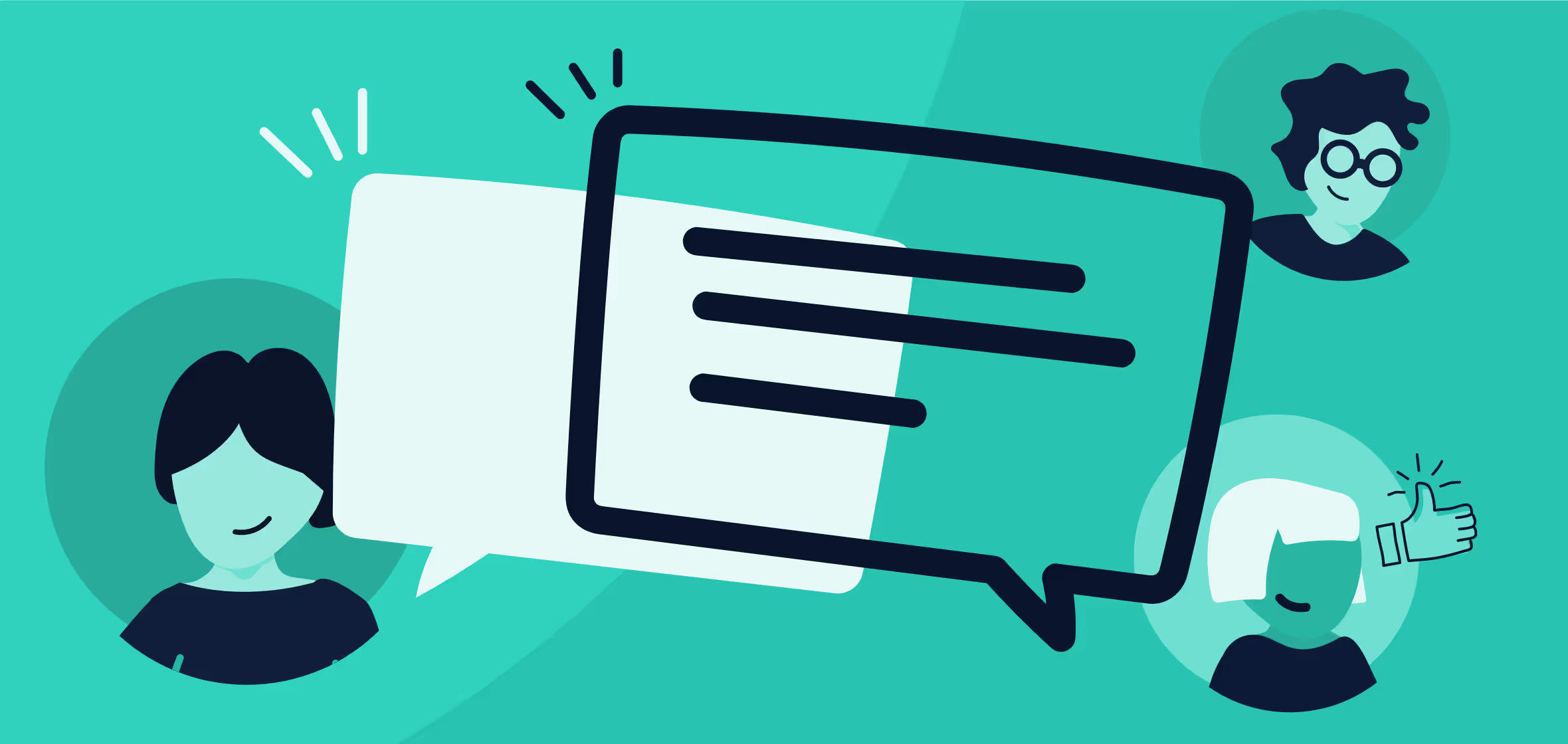How to use the Microsoft Teams admin center – FAQ

Table of contents
The Microsoft Teams admin center is where IT admins go to configure settings, take remediation actions such as assigning owners to ownerless teams, and manage the way business users collaborate in their organization.
Staying up-to-date with the latest details is crucial to ensure efficient and secure collaboration with Teams and Microsoft 365. We've rounded up a few common questions about the Microsoft Teams admin center so you can learn what features and capabilities are available to manage Teams. Let's dive in!
What can an admin do in Microsoft Teams?
A Teams admin is tasked with managing the Teams service, and managing and creating Microsoft 365 Groups. When you assign an admin role to a user, you grant them administrator priveleges and access to tools in the Teams admin center and associated PowerShell controls to perform the following tasks:
- Manage meetings, including meeting policies, configurations, and conference bridges.
- Manage voice, including calling policies and phone number inventory and assignment.
- Manage messaging, including messaging policies.
- Manage all org-wide settings, including federation, teams upgrade, and teams client settings.
- Manage the teams in your organization and their associated settings, including membership (group management supported via PowerShell, team management in the Teams admin center).
- Manage Teams-certified devices and set up and assign configuration policies.
- View user profile page and troubleshoot user call quality problems using advanced troubleshooting toolset.
- Access all reports in the Microsoft Teams admin center.
- Access, monitor, and troubleshoot tenant's call quality and reliability.
- Publish apps to the tenant app catalog in the Teams admin center.
What types of admin roles are there in Microsoft Teams?
Teams has various admin roles that you can assign to users in your organization. Each of these roles is given unique access and permissions to do specific tasks in the admin center.
- Teams administrator: Manage the Teams service and manage and create Microsoft 365 Groups.
- Teams communications administrator: Manage calling and meetings features within Teams.
- Teams communications support engineer: Troubleshoot communications issues within Teams by using advanced tools.
- Teams communications support specialist: Troubleshoot communications issues within Teams by using basic tools.
- Teams Device Administrator: Manage device configuration, monitor the health of the devices in use, restart devices, and set up configuration profiles.
Brush up on the best practices for managing Microsoft Teams permissions.
Where is the Microsoft Teams admin center located?
As an admin, you can access the Teams admin center via the Microsoft 365 admin center by following these steps:
- Go to admin.microsoft.com
- Sign in to your account
- In the column on the left, click Teams to access the Teams admin center
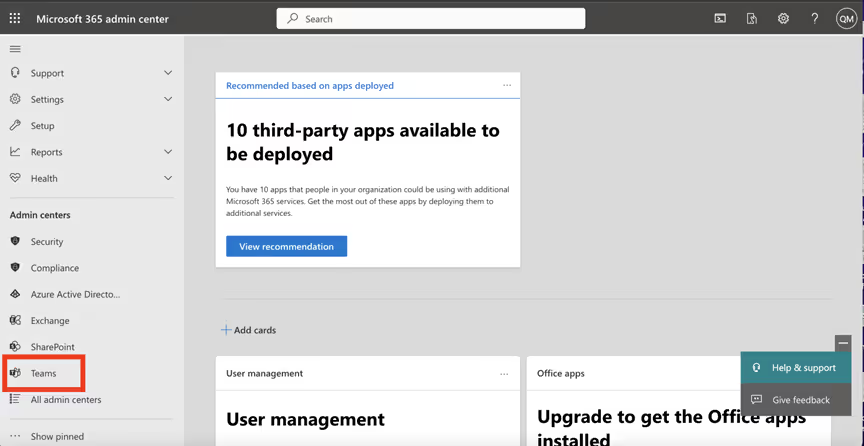
Looking to access the Microsoft Teams admin center directly, without having to going through the Microsoft 365 admin center? Just sign in to Teams using your admin account details, and you’re in!
Where are the Microsoft Teams settings?
In the Teams admin center, go to the left column and click on Teams, and then Teams settings.
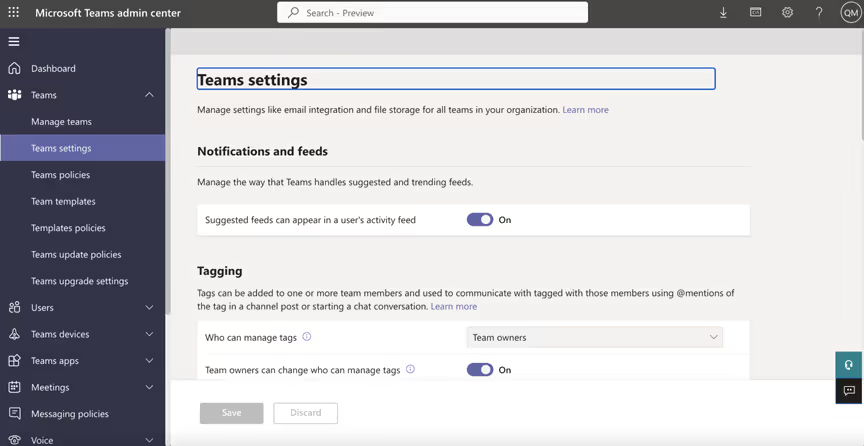
If you're looking to change the settings for your meetings, click on Meetings, and then Meeting settings in the left column.
Good to know:
- The Teams platform ties together other Microsoft 365 services and apps.That means that most Teams data isn’t actually stored in Teams. For example, files and folders visible in a team’s Files tab are actually stored in the team’s associated SharePoint site.
- Depending on the capabilities you want to configure, you’ll need to jump between settings in several different admin centers (not just the Microsoft Teams admin center).
What are the built-in management tools for Microsoft Teams?
The Microsoft Team admin center has various built-in tools you can use to manage teams, such as:
- Teams lifecycle: Manage a team’s lifecycle from the moment of creation and when a team is actively in use, all the way through to archival and deletion.

- Teams usage report: Use the Teams usage report to track user adoption and see who is using Teams and how they’re using it.
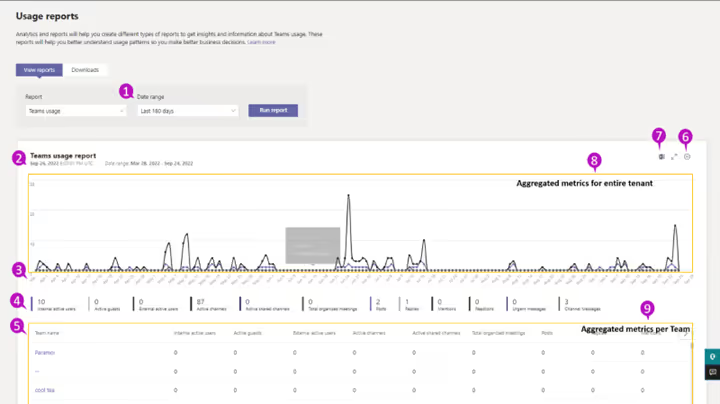
External access and guest access settings: Once you’ve authorized guest access in Teams, you can further configure settings at each authorization level to control the guest access experience according to the needs of your organization.
Configure settings for secure collaboration, including guest access capabilities for calling, meeting, and messaging. These settings are applied across all of your teams in the Teams admin center. Read more about Teams security best practices in our article!
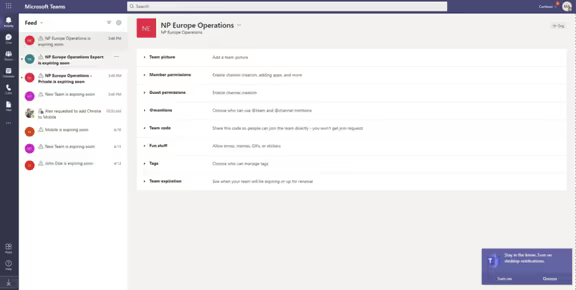
- Manage Teams apps: Use permission policies and settings to configure the app experience for specific users in your organization.
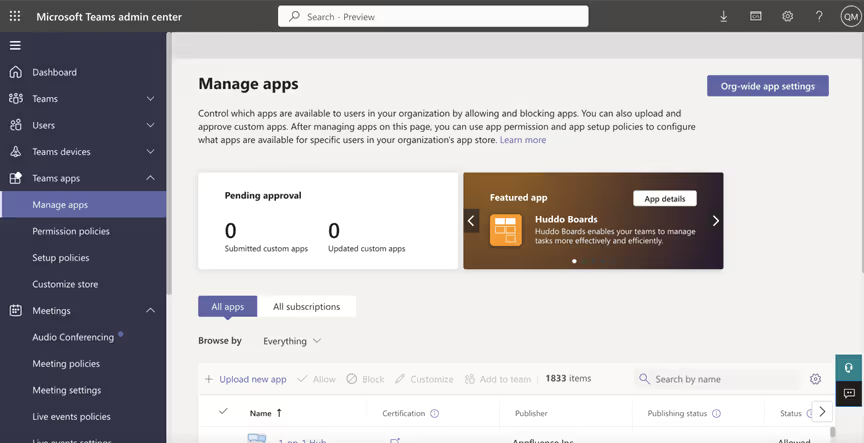
Where is a team profile?
You can manage a team's members, owners, and guests, as well as the team's channels and settings from the team profile.
To manage a team profile page, go to Manage teams on the left column in the Teams admin center.

From the team profile page, you can:
- Add or remove members and owners.
- Add or remove channels (note that you can't remove the General channel).
- Change team and group settings.
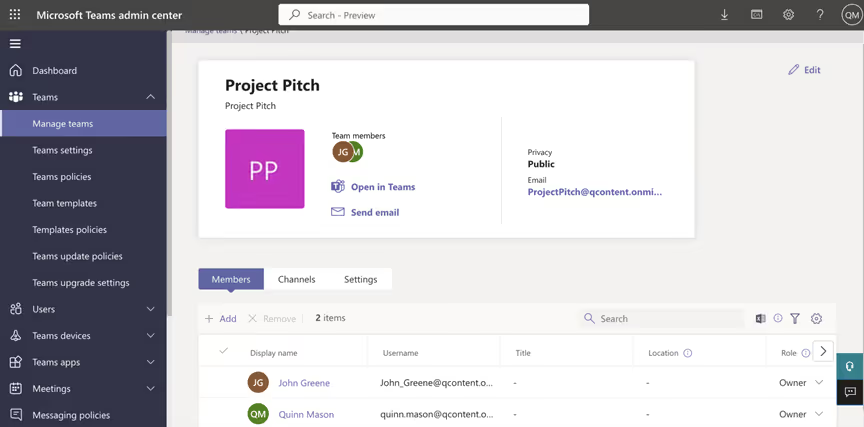
How do I change a team?
You can make changes to a team in the Microsoft Teams admin center. Select Teams on the left column, and then click Manage teams. You'll see a list of teams in your organization. Pick the team you want to make changes to.

In the Members tab, you can make changes such as adding or removing members, changing roles, or viewing their management pages.
In the Channels tab, you can make modifications or edits to the name and description of a channel, add another channel, or remove a channel.
In the Settings tab, you can view the configuration of a team. You'll be able to manage permissions, such as allowing edits or deletions of sent messages and more.
I cannot add a new user to the Teams admin center, even though they have been added to our Active Directory. What could be the issue?
Microsoft 365 and Active Directory are synced regularly but this is not always instantaneous. It can sometimes take up to 24 hours for a new user to appear in the Teams admin center after they have been added to Active Directory.
If after 24 hours the user is still not appearing, check to ensure that they have been correctly added in Active Directory and that they have been assigned a Teams license in Microsoft 365.
Some settings I configured in the Teams admin center aren't being applied to our Teams users. What could be causing this?
There are a few possible reasons for this issue. First, it's worth checking to ensure the settings were saved correctly in the admin center and that there was no error in configuration.
Second, remember that changes in the Teams admin center can take a while to propagate to all users - typically up to 24 hours. If the issue persists beyond this time, it may be due to conflicts with other settings or policies.
Also, make sure your governance plan is in place and triple check in the Microsoft Compliance Center to make sure every user is aligned to the right role and permissions they need.
How can I ensure that sensitive information isn't shared externally through Teams?
Microsoft Teams provides several measures to ensure data security. To prevent sensitive data from being shared externally, you can configure data loss prevention (DLP) policies in the Microsoft 365 compliance center. DLP policies can help you identify, monitor, and automatically protect sensitive information across Microsoft Teams.
How can I set up multi-factor authentication for Teams?
Multi-factor authentication (MFA) can be set up from the Microsoft 365 admin center. MFA adds an extra layer of security to your organization's data by requiring users to authenticate using more than one method of verification. You can enforce MFA for all users or only for certain security groups as per your organization's needs.
What privacy settings can be configured in the Teams admin center to protect user data?
Teams admin center allows you to manage several privacy settings. These include settings related to meeting recordings, attendance reports, participant behavior, and more. For instance, you can configure who can start or stop a recording, who has access to attendance reports, whether chat is allowed, etc. Remember that privacy settings should align with your organization's privacy policies and regulatory compliance requirements.
How can I control guest access to our Teams?
Guest access in Teams allows people outside your organization to access teams and channels. You can control guest access in the Teams admin center by enabling or disabling guest access, and by configuring what guests can and can't do. This includes capabilities like making private calls, sharing their screen, editing or deleting sent messages, and more.
Can I monitor or audit Teams activities for compliance purposes?
Yes, you can. Microsoft 365 provides an audit log search tool in the Security & Compliance Center which can be used to monitor and investigate actions taken in Teams. The audit log records activities like file and resource access, message interactions, changes to settings or permissions, and more. Regular auditing can help you ensure your Teams environment is secure and complies with your organization's policies.
How do I automate Teams management?
Automating management tasks in Microsoft Teams can save time by eliminating manual efforts on routine activities.You can automate specific management tasks throughout a team's lifecycle using PowerShell scripts and Graph API automation tools.
But have you considered a third-party tool to pack even more Teams management power and help free up IT’s time?
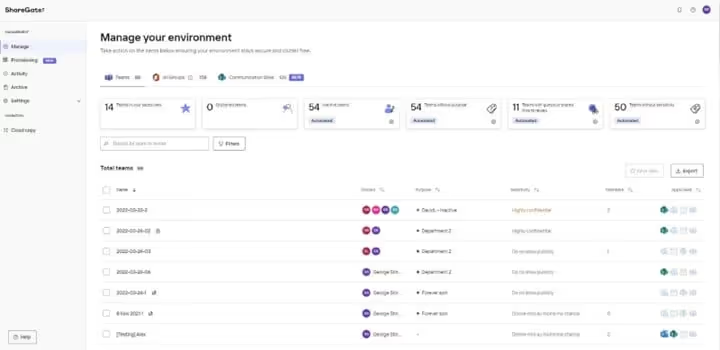
ShareGate can help you manage Teams efficiently and securely. With ShareGate, you can empower end users to create and manage their own resources with IT’s guardrails in place, automate time-consuming tasks, and guide the implementation of governance best practices.
The best part? ShareGate is an out-of-the-box Microsoft management solution with a user-friendly UI that can help you find and fix issues in minutes.
That's a wrap on how to use the Microsoft Teams admin center FAQ! Hopefully we've covered everything you need to know to feel more at ease navigating the Teams admin center.
.jpg)


.svg)
.avif)
%20(1).avif)






